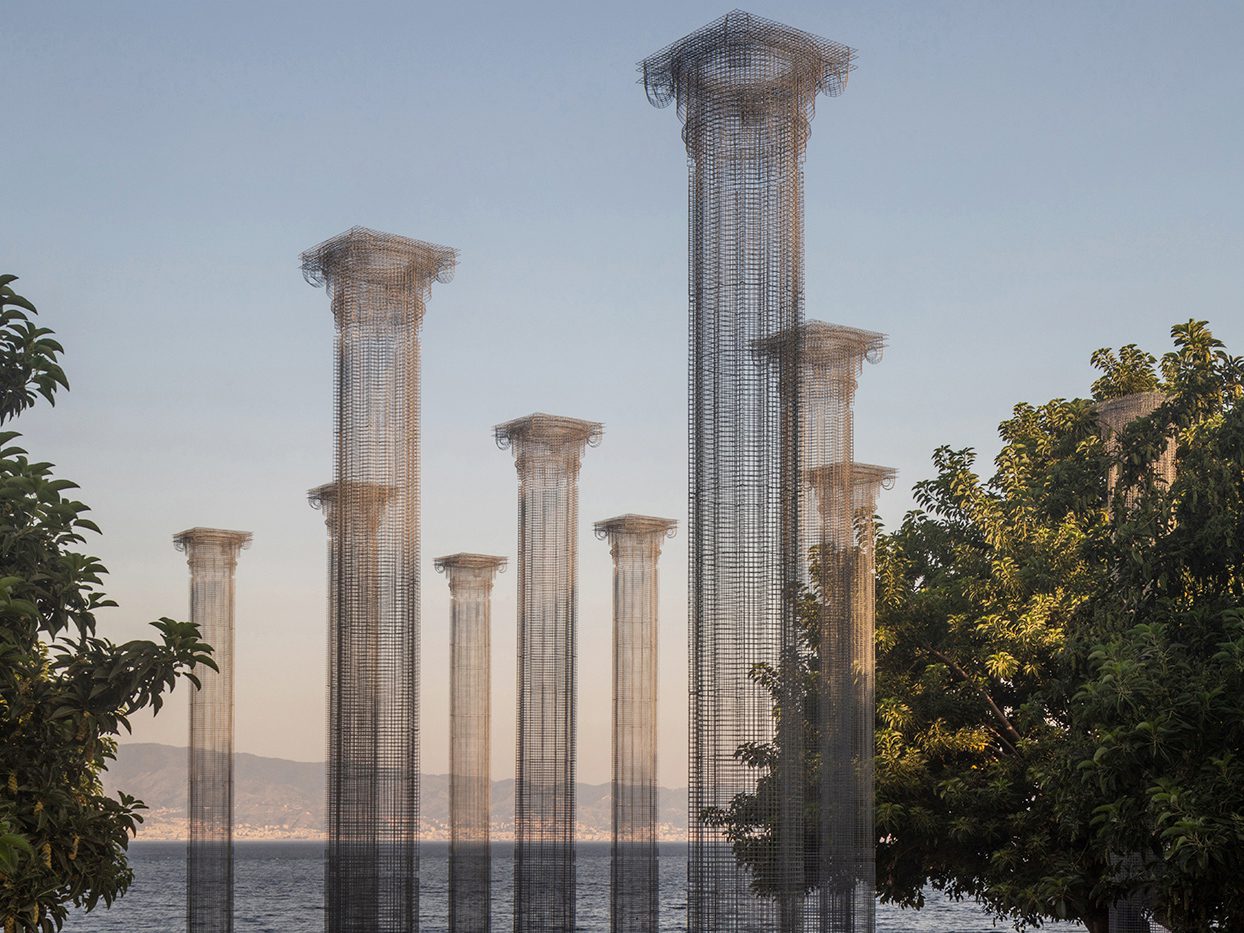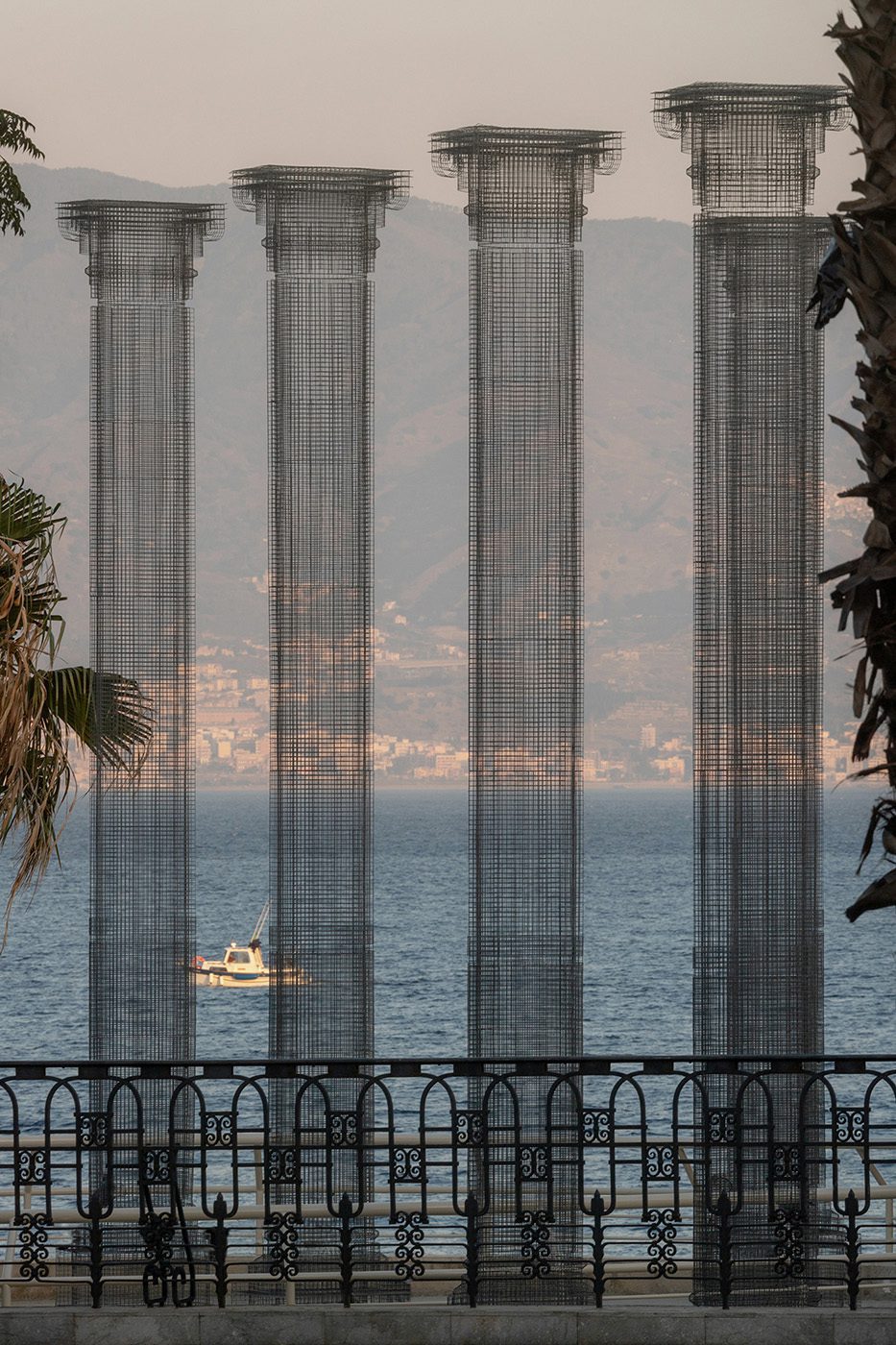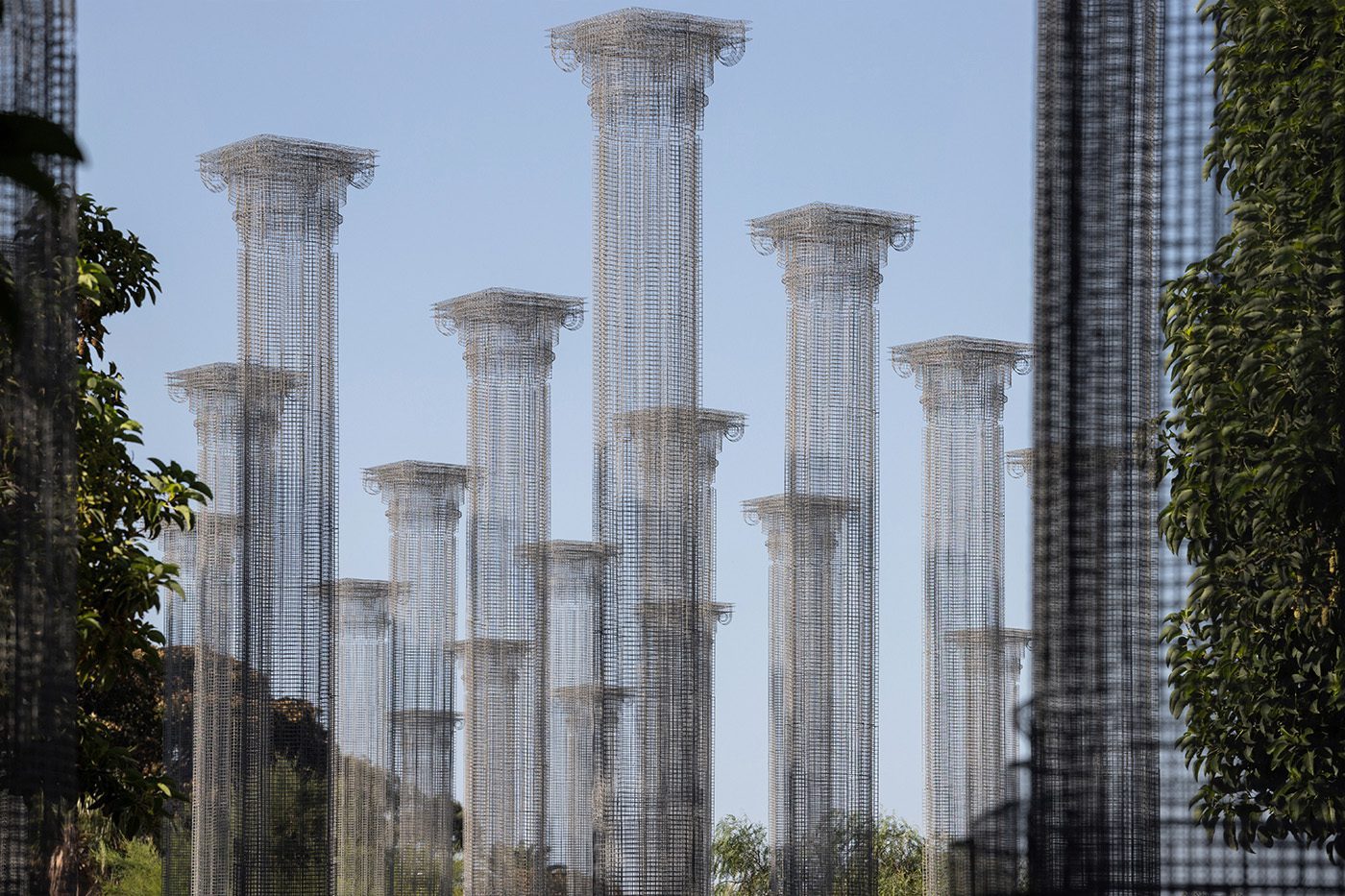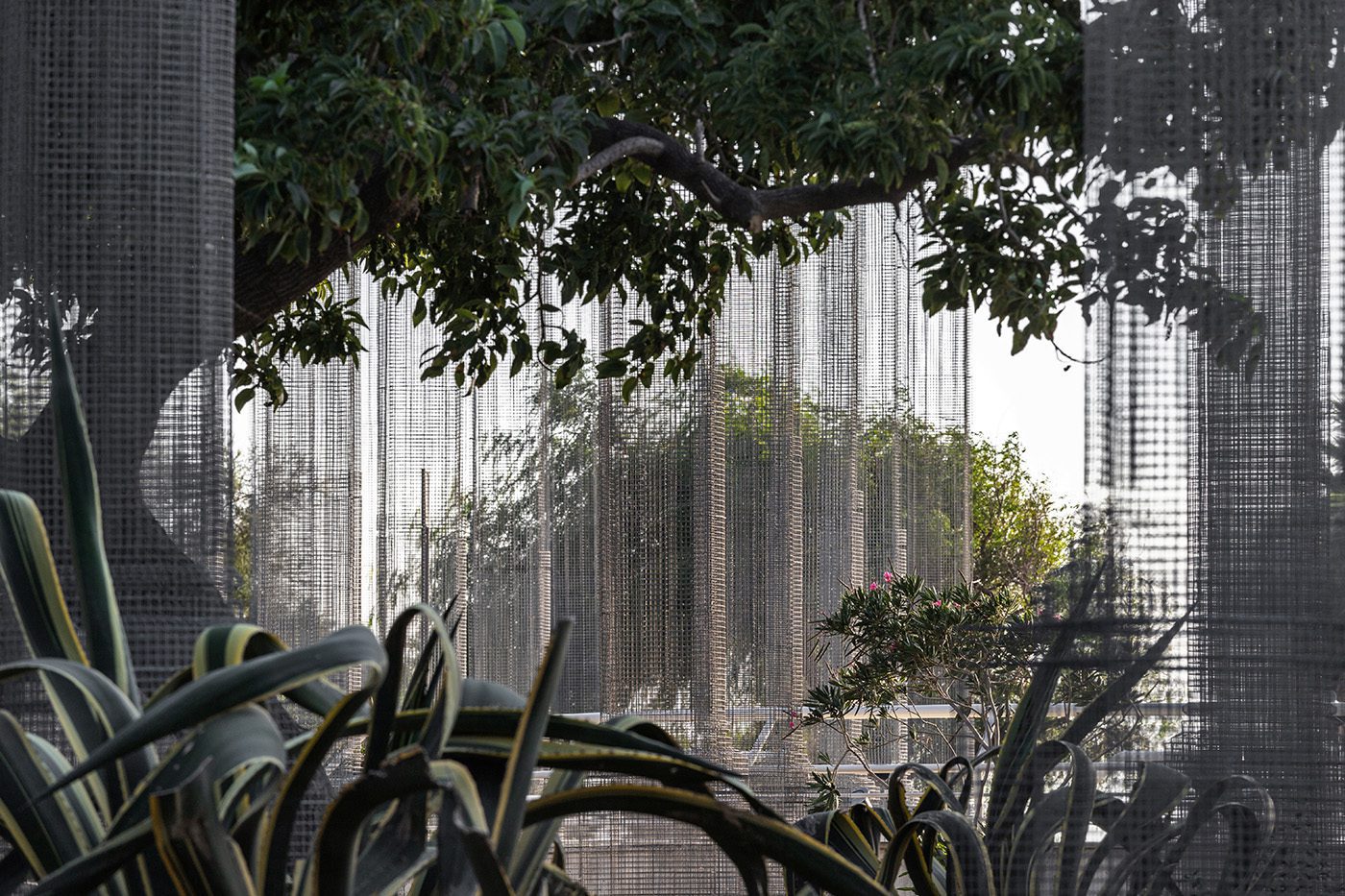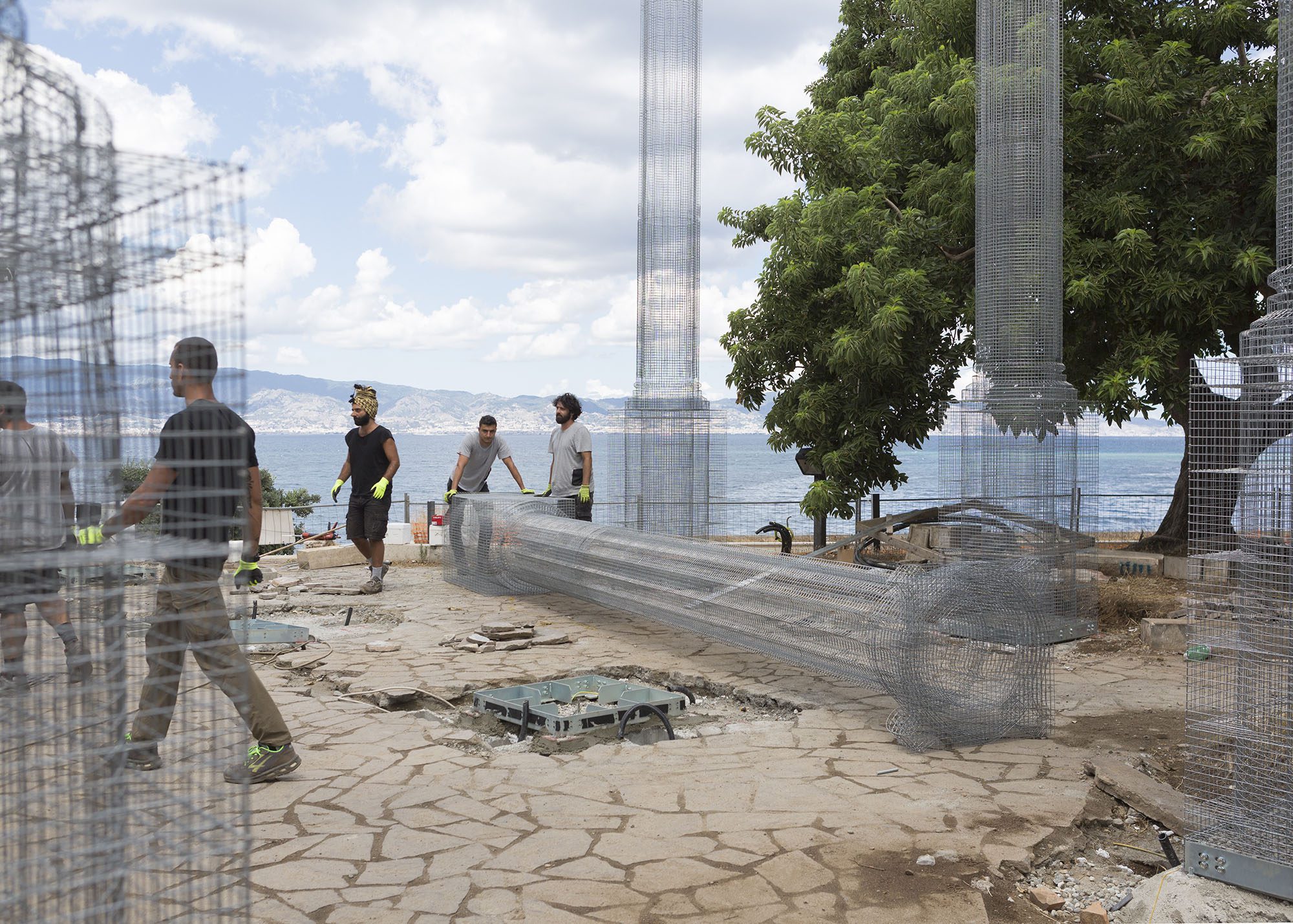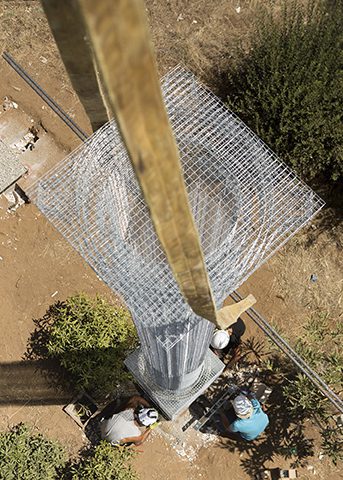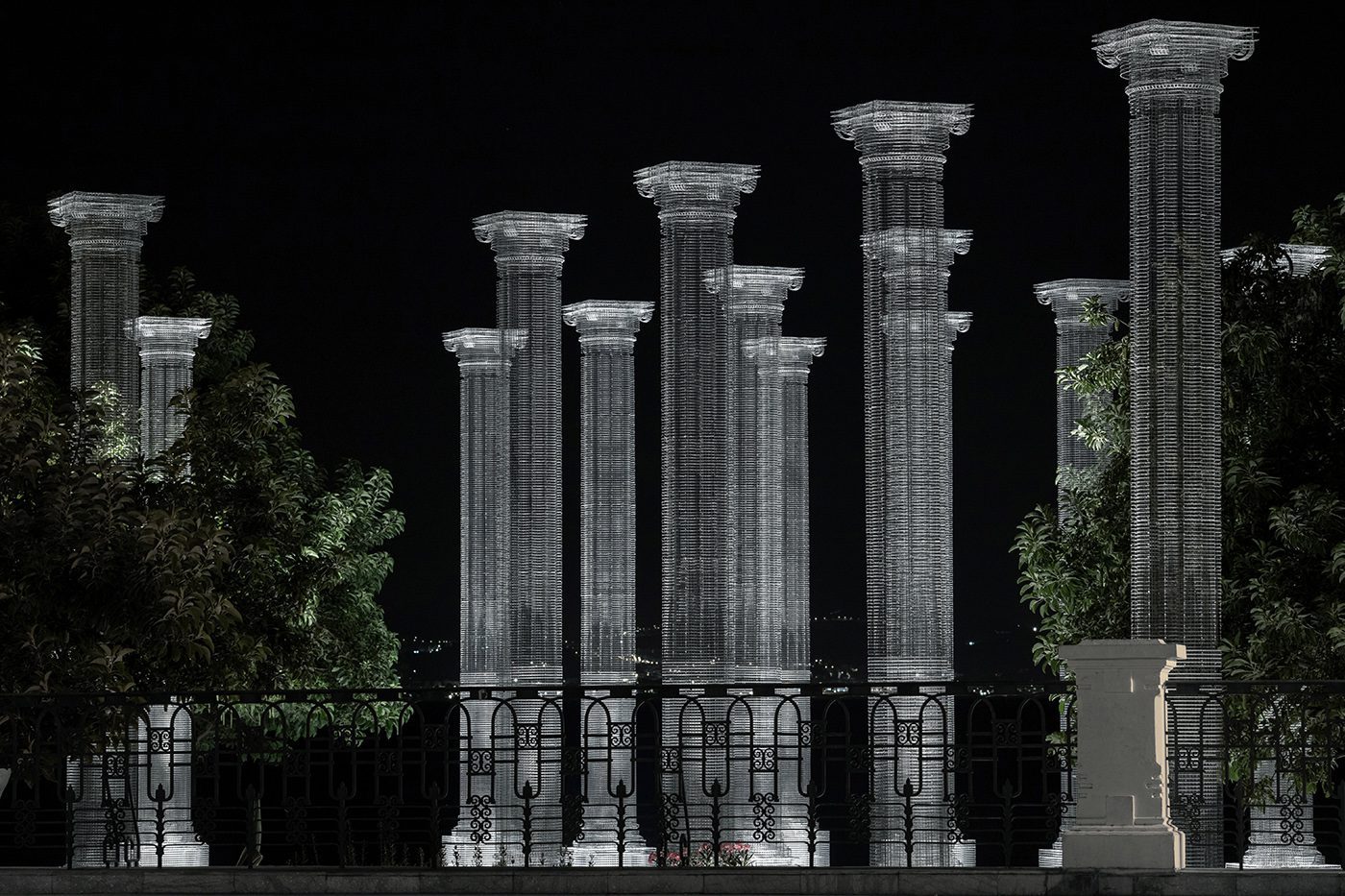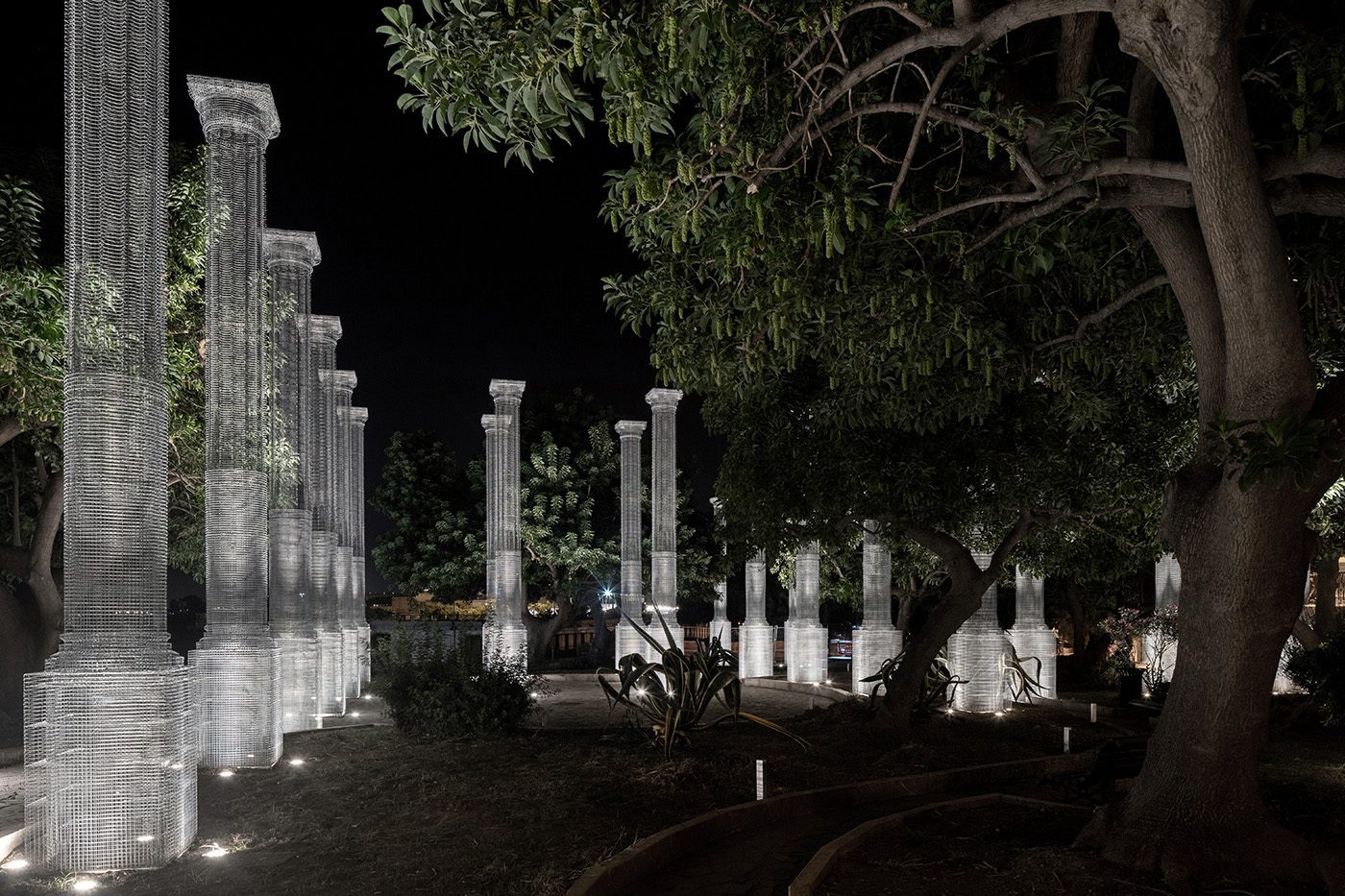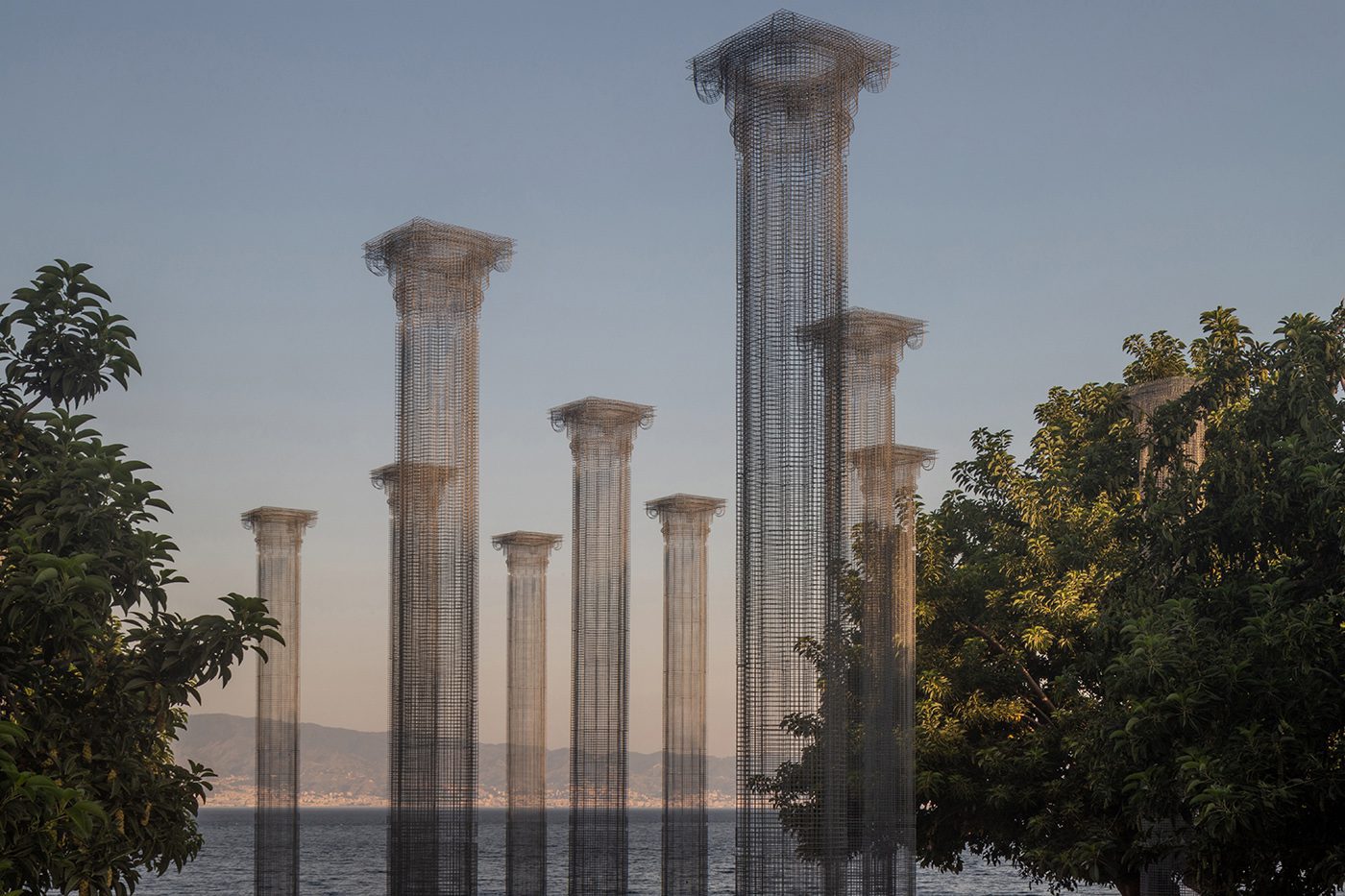It is one of the most beautiful poetic actions done in recent times. An alliance between materials and the surrounding landscape, a union between matter and nature. In an idyllic setting, on the coastline of the southern Italian city of Reggio Calabria, right at the tip of the Italian ‘boot’ and overlooking the Sicilian coast, the artist Edoardo Tresoldi (Milan, 1987) has carried out his last major installation, Opera, which has come to stay permanently. «Opera has been created to celebrate the contemplative relationship between place and human being through the language of classical architecture and the transparency of ‘Absent Matter’, expressed through wire mesh», introduces Tresoldi. Nets of mesh and wires that form 46 pillars of up to 8 meters high in a park of 2,500 m2 accessible to everyone and that has already become one of the largest public space artistic installations in Europe. A place of contemplation, a “mental agora” surrounded by trees and facing the sea full of energy, harmony and contrast. ‘Opera’ is now his second permanent installation in Italy after ‘Basilica of Siponto’, commissioned by the Italian Ministry of Culture in 2016 in Puglia. We talk to the Italian artist Edoardo Tresoldi about this last project which is about to blow your mind.
How do you deal with the spaces you are going to intervene? And more specifically, in this location, in Reggio Calabria seafront, what did you wanted to bring here?
Every time I approach a new installation I spend a lot of time immersing myself into the location. I let myself be inspired by its physical, emotional and social characteristics and then I try to compose the artwork as a character which can be enjoyed through an emotional path. In the case of Opera, I wanted to monumentalize the place and its contemplative relationship with the Strait of Messina.
In which way do you create an effective relationship between landscape or spaces and the human being?
The classical archetypes and the pillars are architectural tools that I use to narrate the celebration of the relationship between man and site. Opera celebrates the pure and simple moments that citizens and visitors in Reggio Calabria can enjoy while looking at the Strait.
You get a material as rough as wire mesh to fill your installations with poetry. How did you get to it?
I discovered wire mesh when I worked as a scenographer in cinema and music, and I later defined it as the main point of my research, the ‘Absent Matter’. It is a noninvasive and delicate presence that allows me to draw in the landscape and to accommodate the context within my artworks, narrating an absence and a mental projection. Through the wire mesh, the artworks blend with the surroundings and the lights, all becoming a unique presence.
Are you exploring any new materials for future installations?
I’m researching new materials and techniques. Also through STUDIO STUDIO STUDIO, the interdisciplinary project I recently founded to support and create contemporary art projects, I experiment new materials and collaborations.
In my previous works I hybridised the wire mesh with other materials; in ‘Aura’ (2017) I made use of corrugated metal for one of the structures, in ‘Simbiosi’ (2019) I filled it with local stones in order to define a contemporary ruin. In ‘Gharfa’ (2019), presented in Riyadh with STUDIO STUDIO STUDIO, I made use of cork, inserting it in the wire mesh structure.
There is a strong connection in between many of your installations and the rich history of your homeland, Italy. Is there an aim to turn or represent Italy’s ancient heritage into something contemporary?
Italian architectures and ruins are deeply rooted in my imaginary. Through classical archetypes and an industrial material like wire mesh, I compose a contemporary language that dialogues with the elements of the landscape.
‘The Basilica of Siponto’, my only artwork so far conceived in relation to a historical site, led to the ‘Metaphysical Ruin’ concept, the application of the Absent Matter on the historical substrate. It places itself as a further phase of the architectural life cycle. The ‘Metaphysical Ruin’ reintroduces the original architecture’s shapes while accompanying the human being in a different experiential and spatial path, blending with the surrounding.
Photos: Mattia Greghi // Roberto Conte

